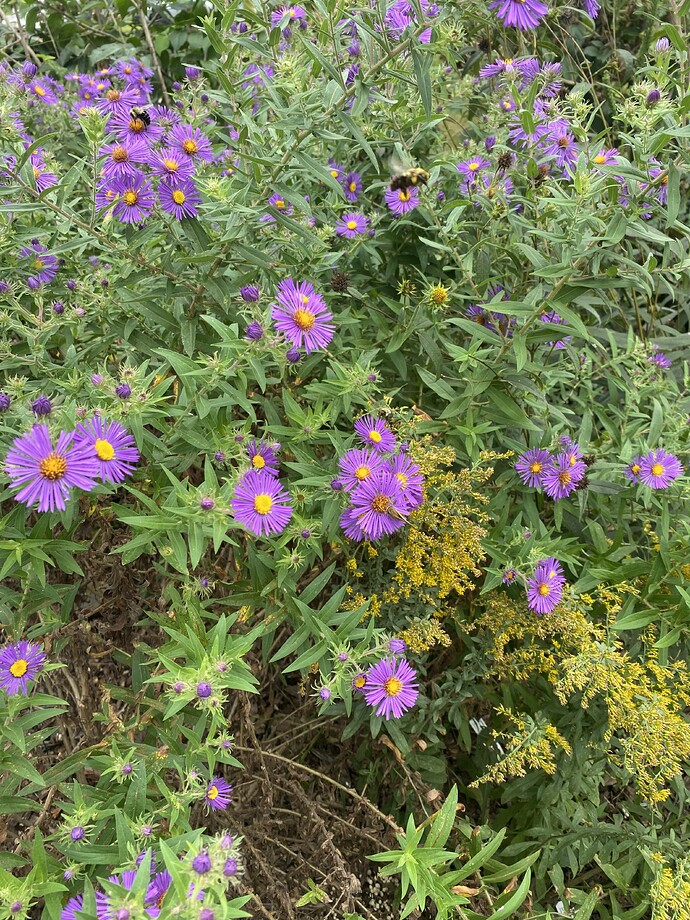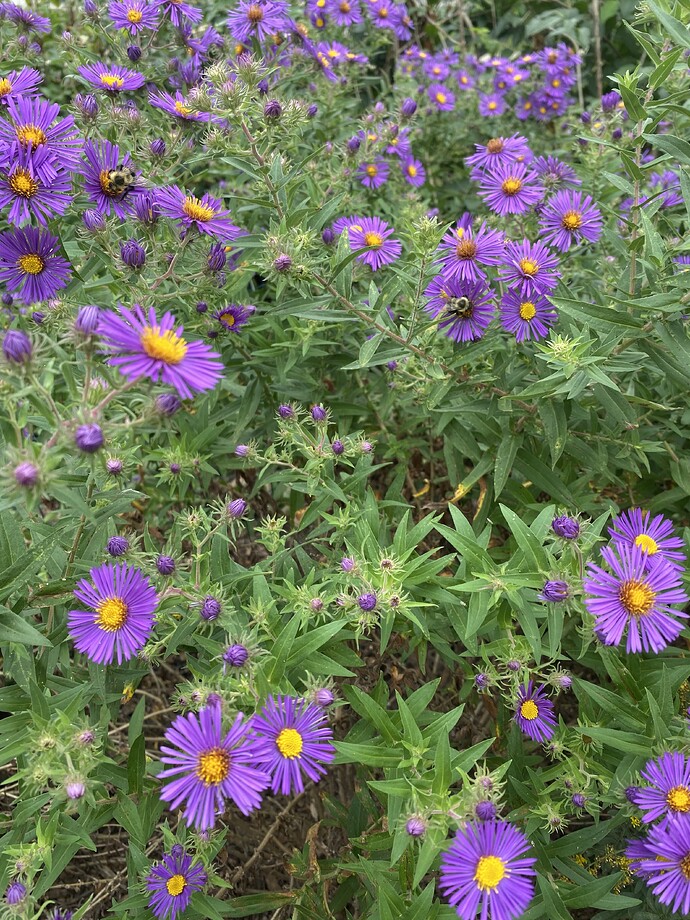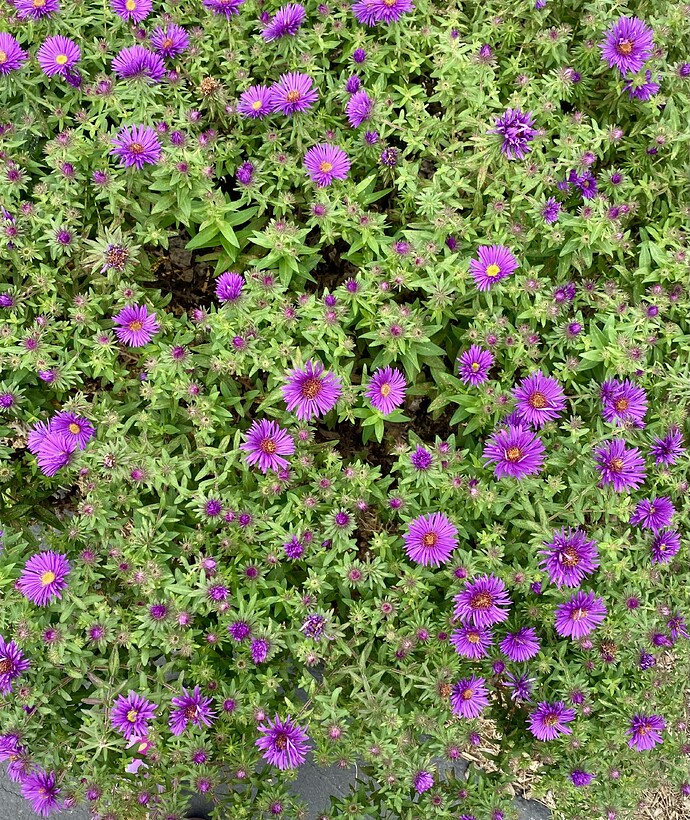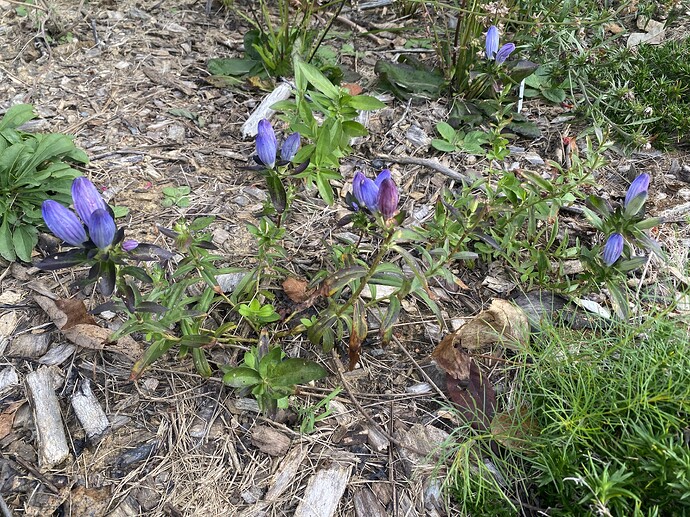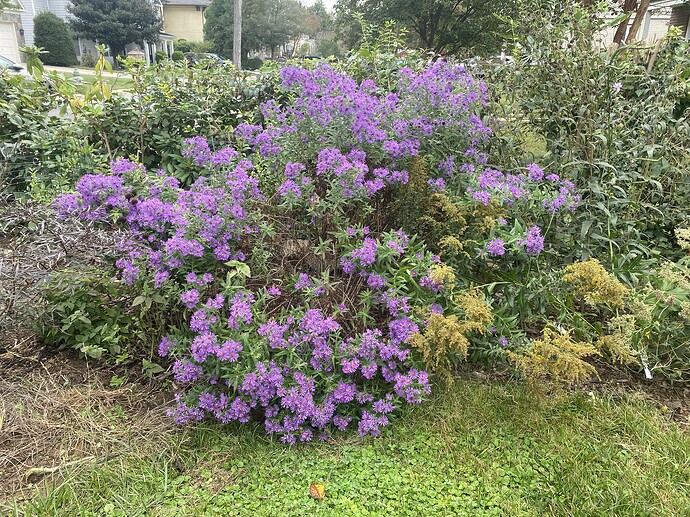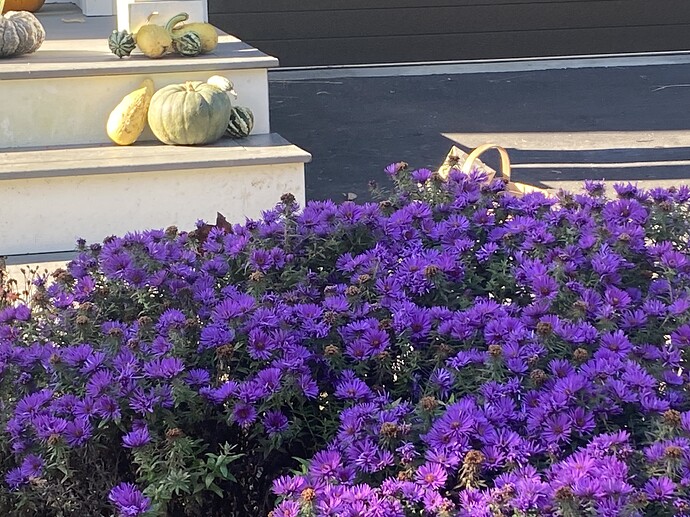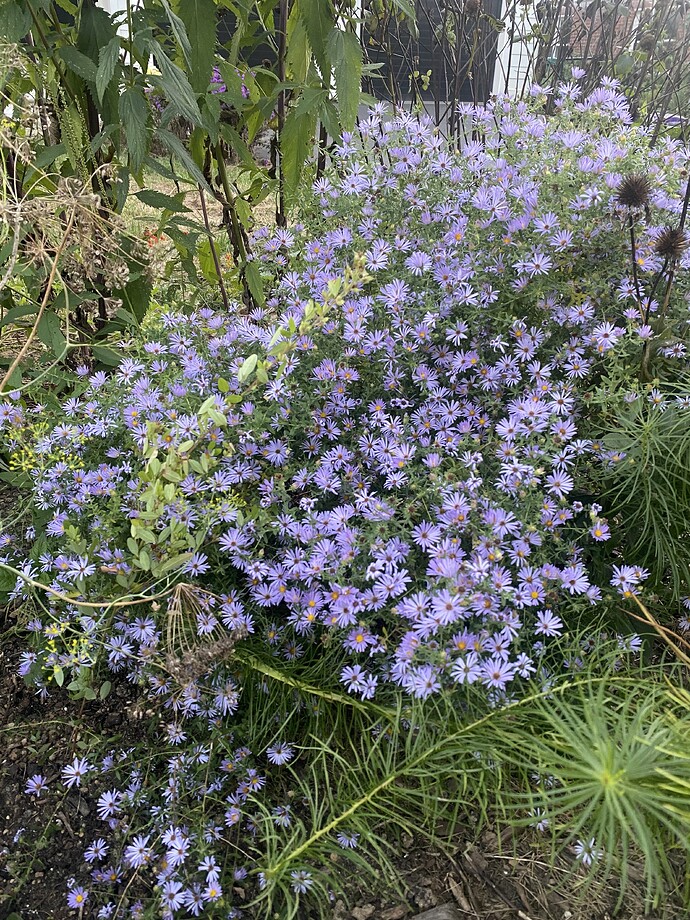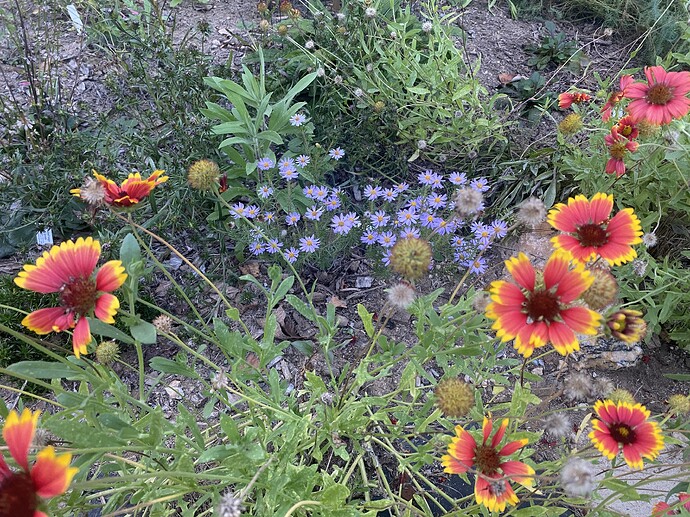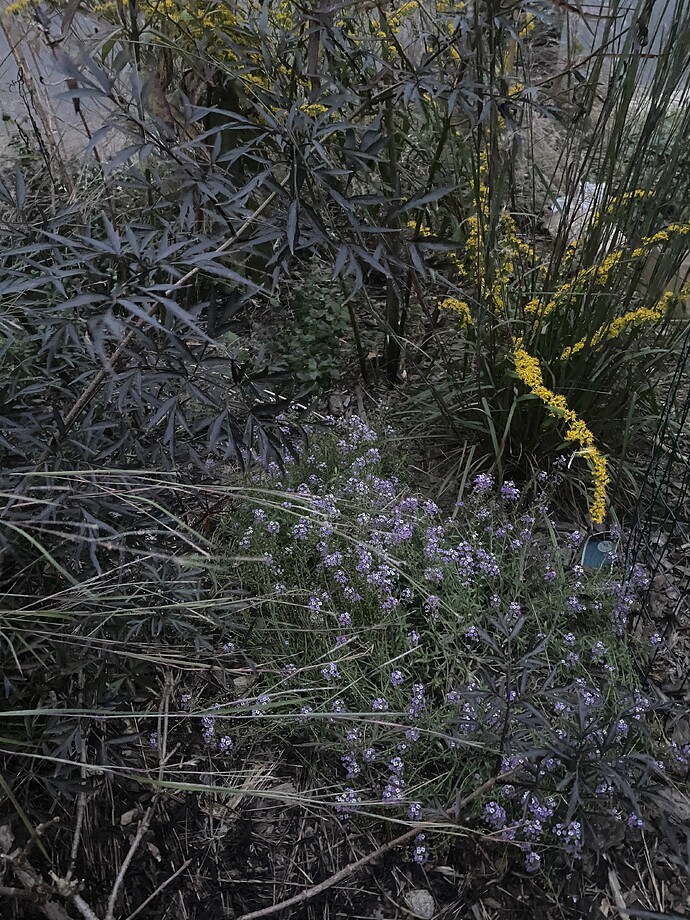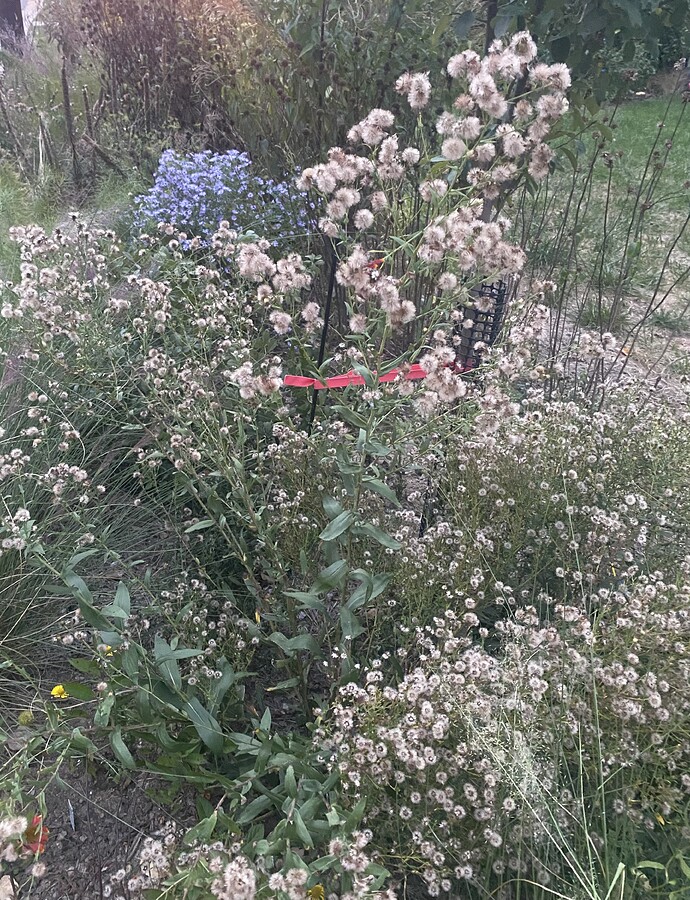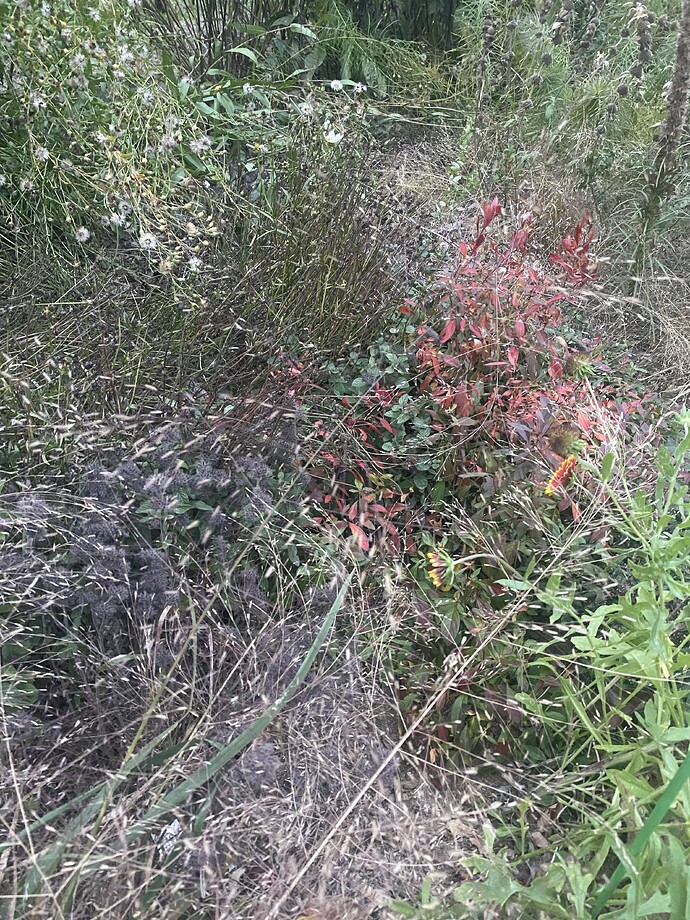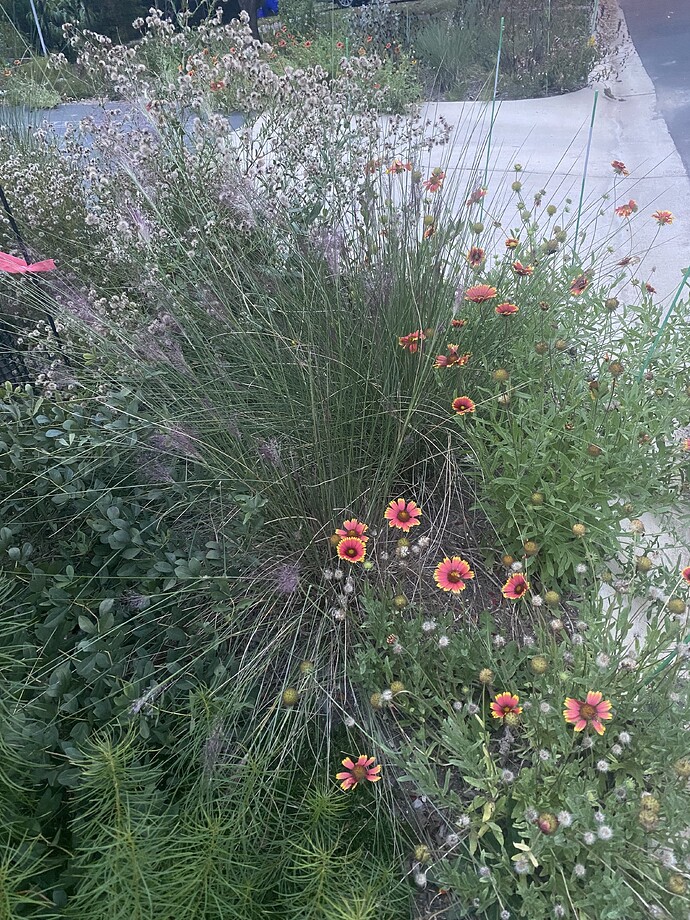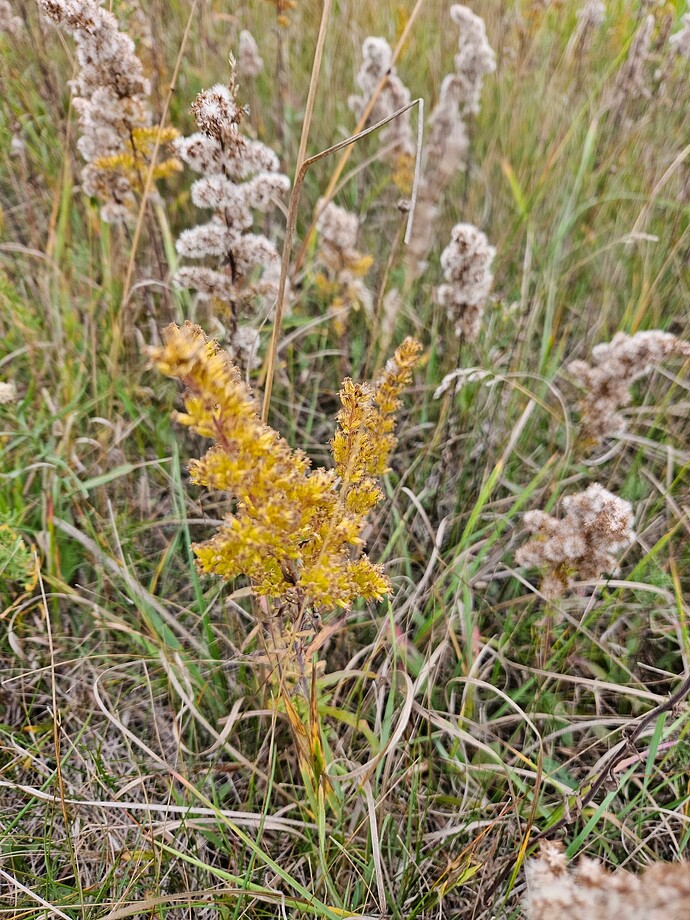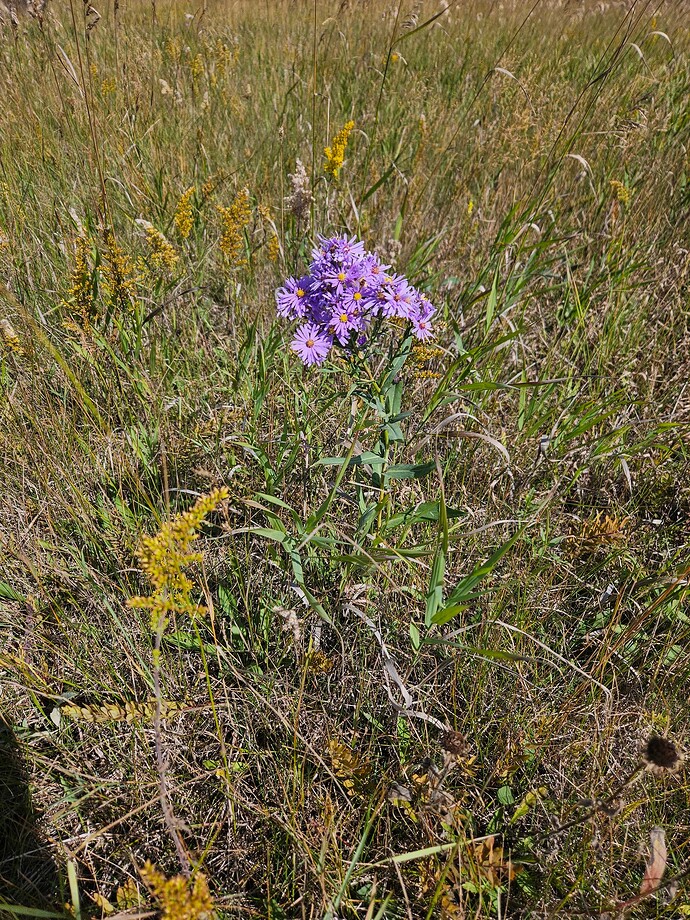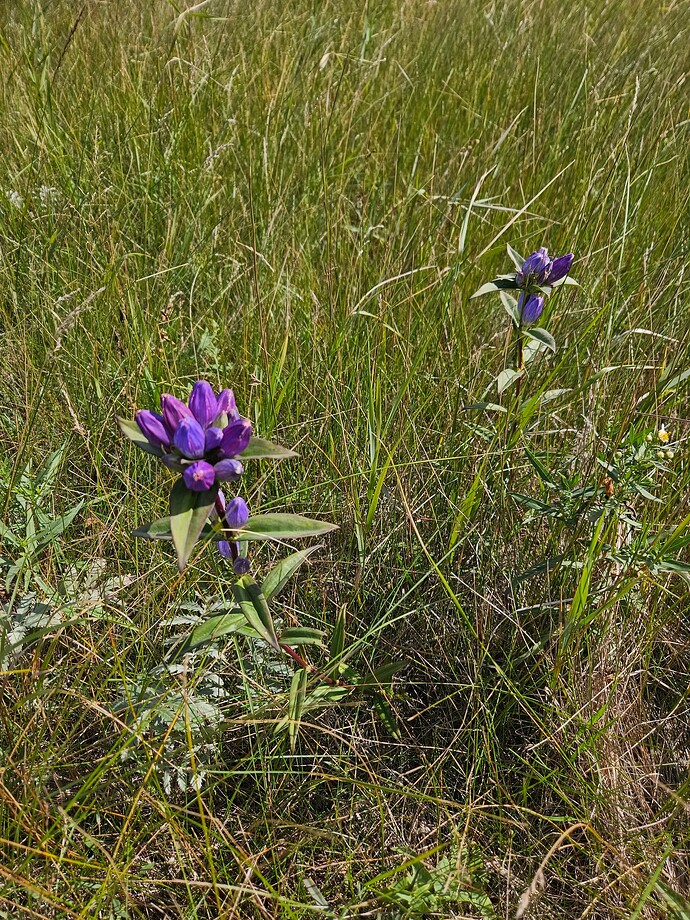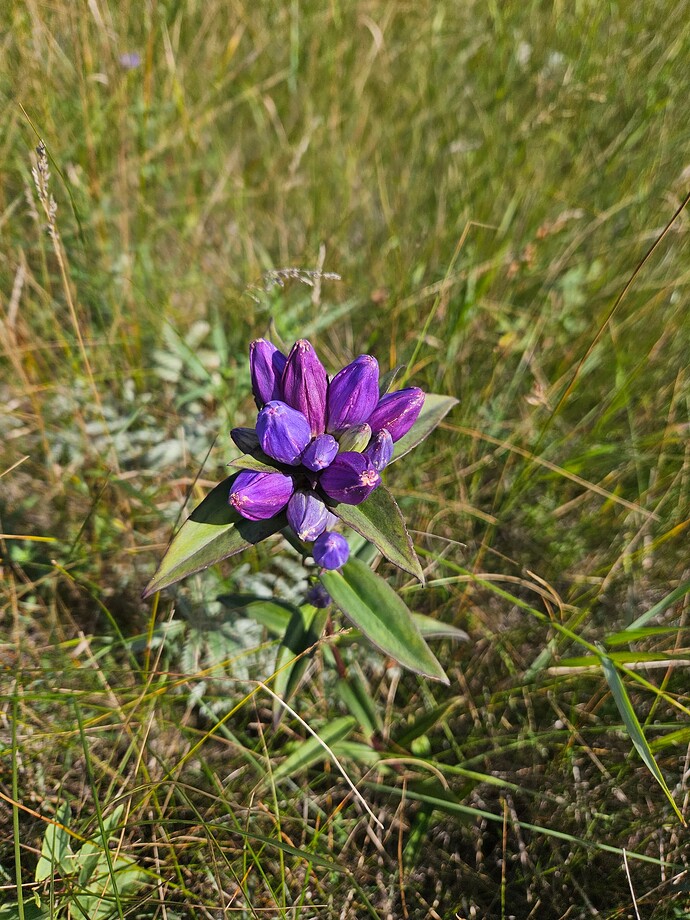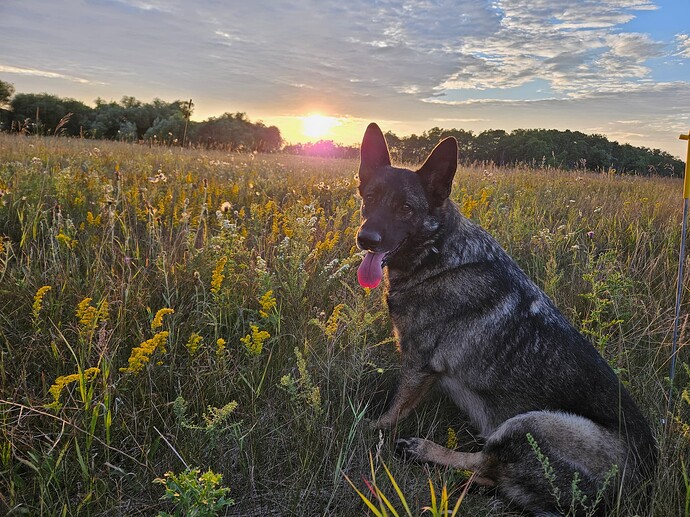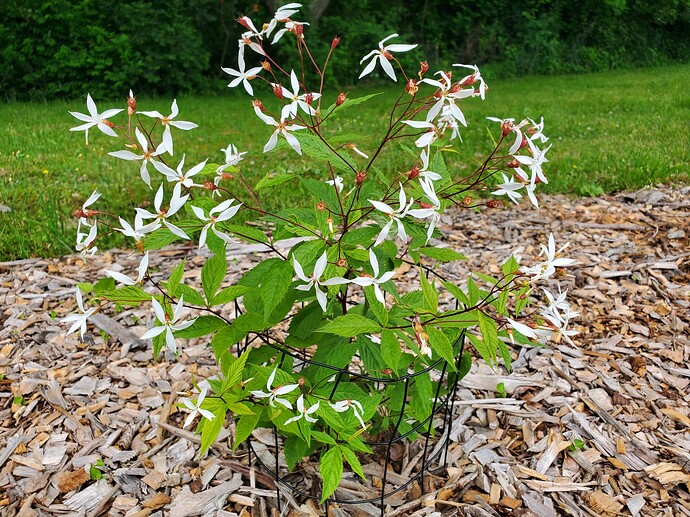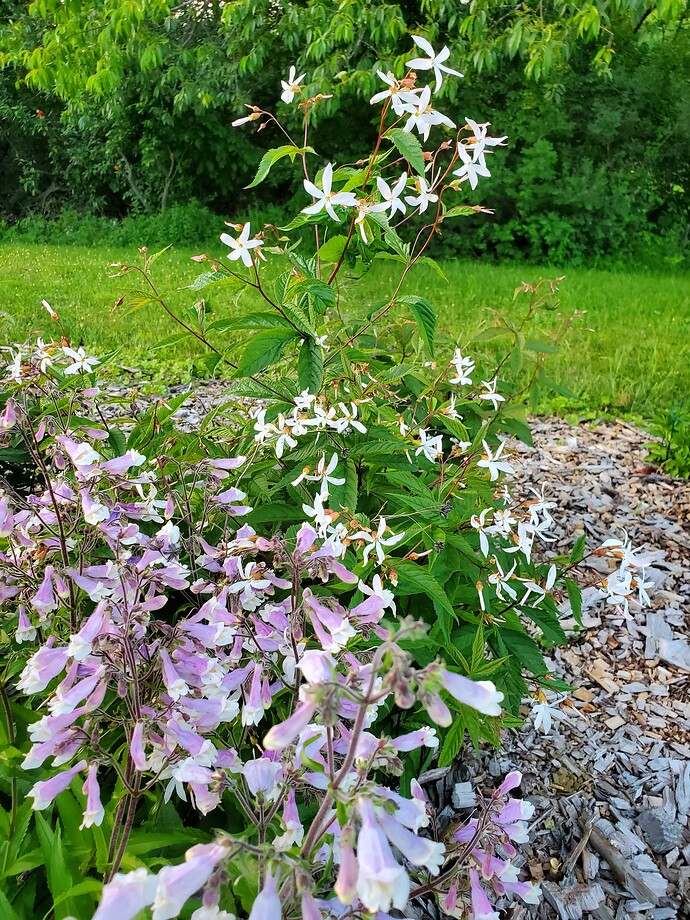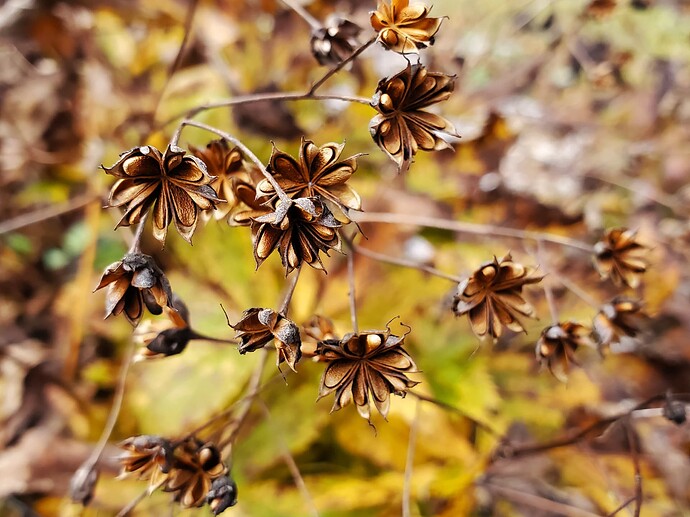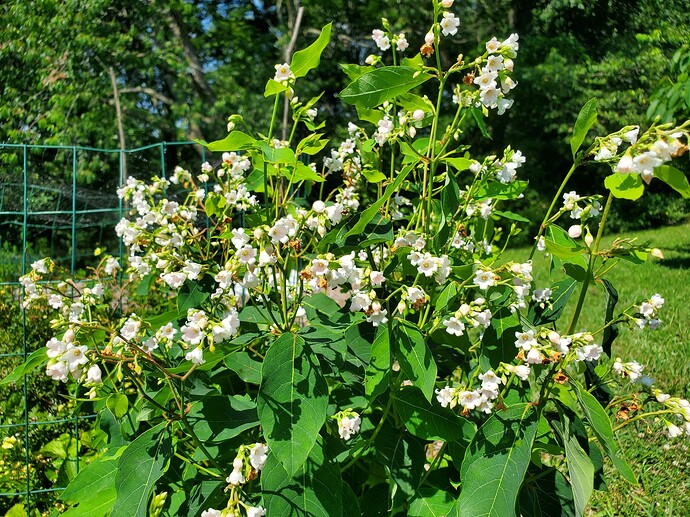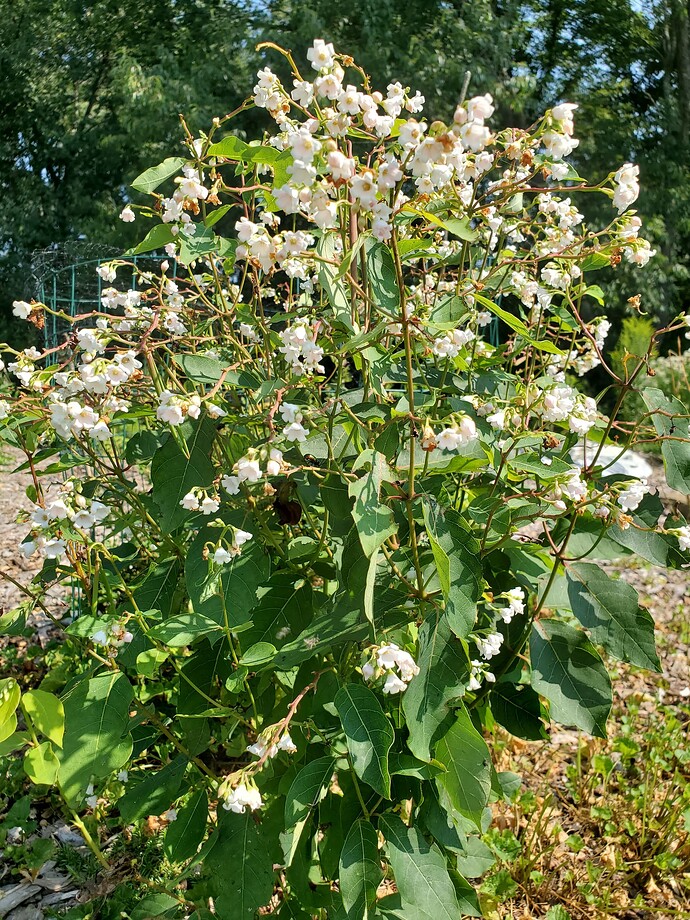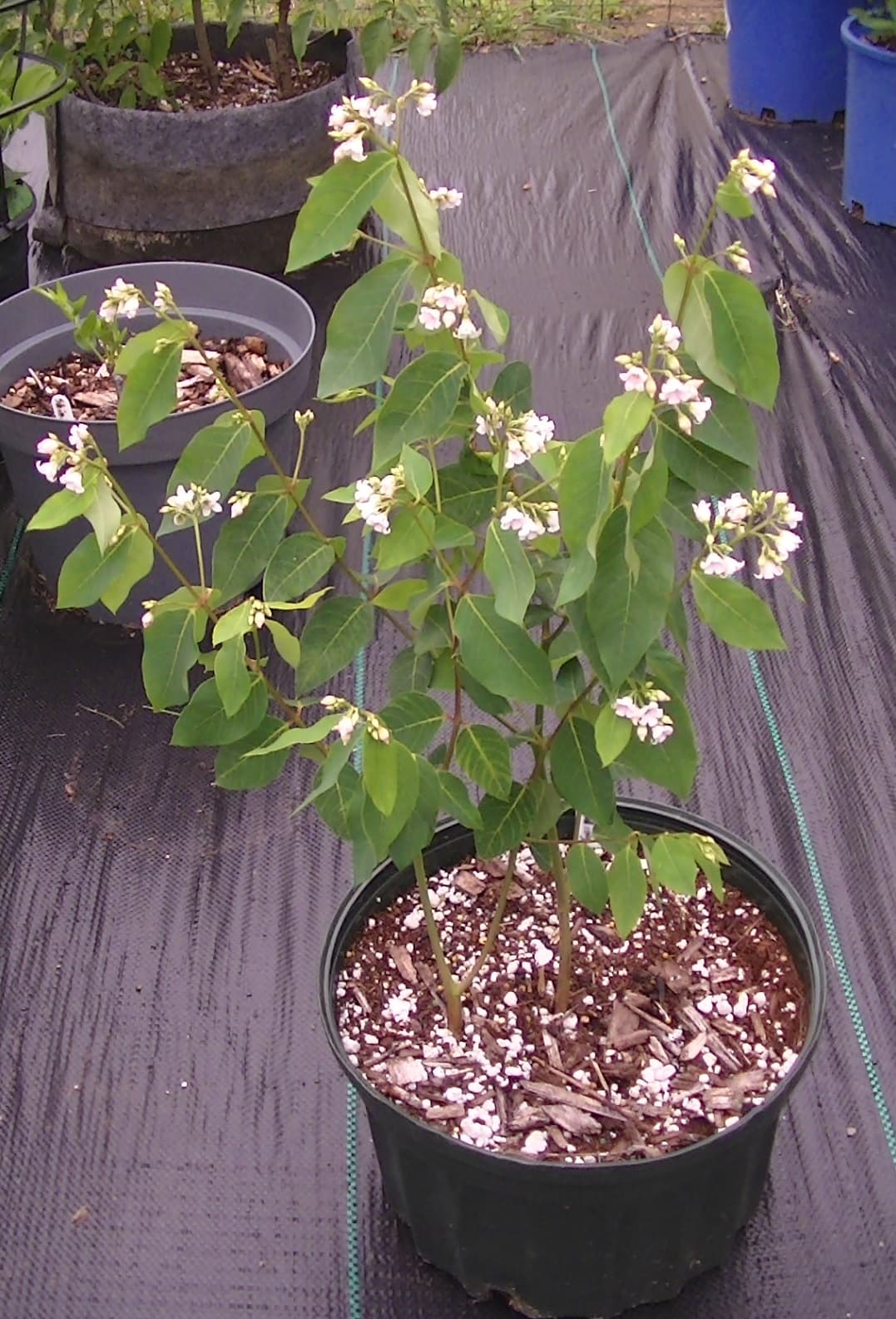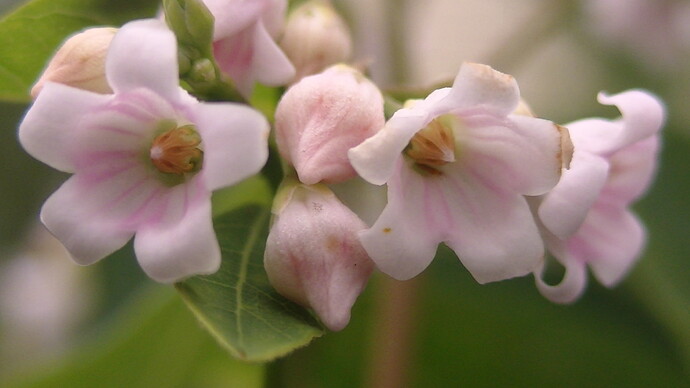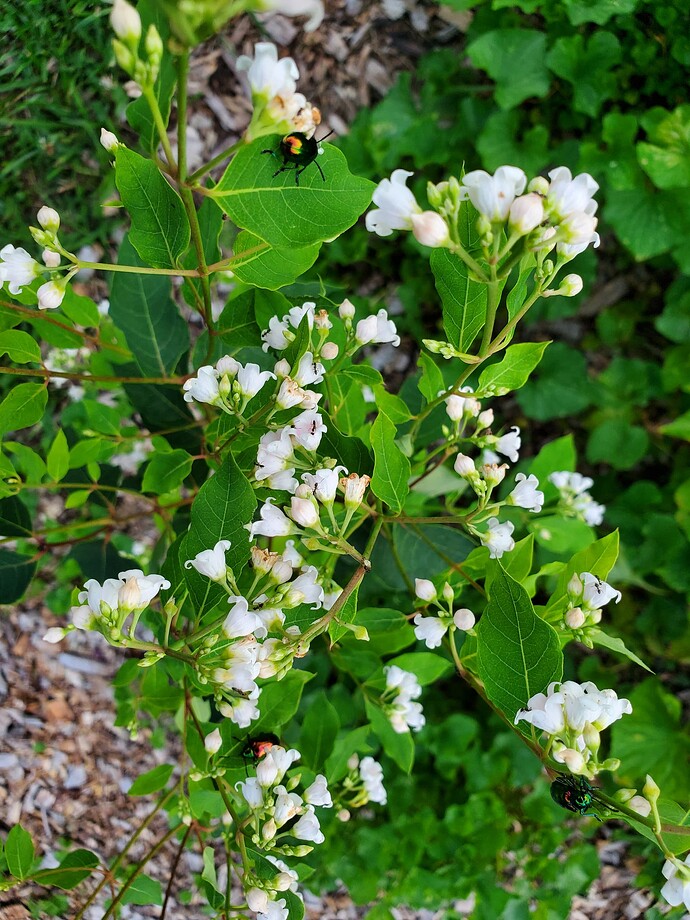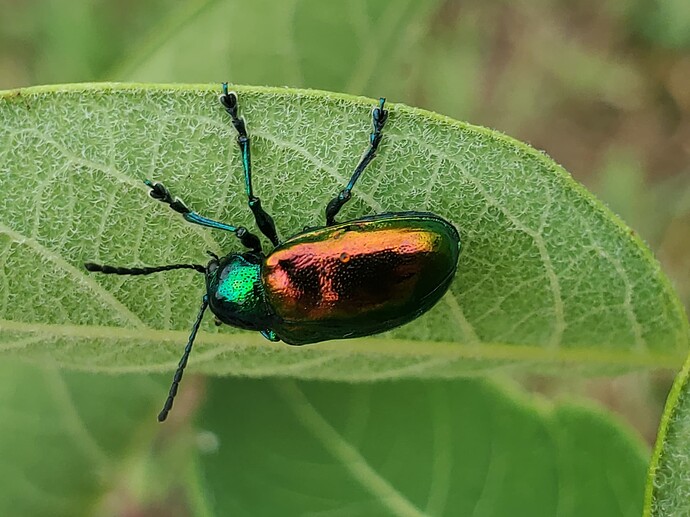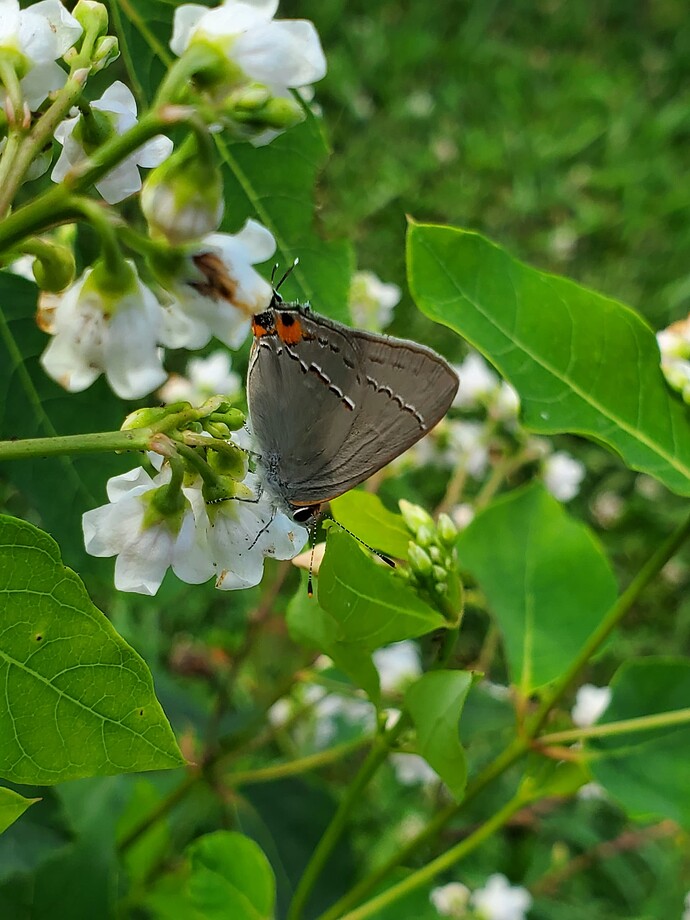Looks a lot like wild sarsaparilla. I guess they’re related, according to a web search.
@pine… there are a few plants that look quite similar to ginseng… especially from a distance.
A young hickory sprout… from a distance can fool me… up close not so much.
Mature ginseng has leaflets in groups of 5… that all attach to the stalk or prong at the same point. The 3 larger leaves point out from the center… the 2 smaller leaves point back to the center.
Not so of Sarsparilla… or a young hickory sprout… once you look close enough at them you can see that.
TNHunter
For anyone near Annapolis, this is a great native sale happening today:
I forgot to post the Locust Grove sale here. See mid Atlantic thread. That’s happening today/Sunday at Pope Farm Nursery. LG and CCC both have proceeds going to good, nature-related causes. Lots of nice master gardeners at both if you have questions.
It’s that most wonderful time of the year for us native fanatics! I got a bunch of odd ball or new-to-me things yesterday (not sure how I still need 50 plants…) along with lists for family and friends for designing and planting this week. Off to Annapolis this morning for more today. 20 years ago, I got a C+ in botany as a straight A HS/college kid science major because I just hated plants SO much I couldn’t even stand to read about their basics. Worst grade of my life. Thank goodness life is funny like this, makes it interesting.
New England aster in bloom. So many bees when I paused to look at it. Denser one is cultivator “purple dome” (more compact).
s
Bottle gentian (Gentiana clausa). Deer nibbled, but recovering. I love this little plant. The blooms stay tightly shut, and the bees pry them open, disappear inside and then reappear going to the next one. It’s neat to watch.
New England aster last week in full bloom. Picture doesn’t do it justice. The deep purple blooms are so vibrant against all the fading colors of the remaining perennials.
Purple dome full bloom, oddly artistic picture taken by a little kid
Aromatic aster
Stiff aster- a much smaller, under 1” dainty aster
(The aster Latin names don’t stick to my brain as well and some are a different genus)
Fall colors at dusk. Seeds galore. I love the reds, purples and fluffy seed heads even more than full bloom. Pink muhly grasses starting to bloom. I lost 5+ of them to the stupid pill bugs this spring (hundreds living in the base of the each grass devouring new growth on them and 6+ coreopsis they killed), so will not have the full effect of last fall, but still should be pretty, feathery pink catching the morning light in another 2 weeks. Next spring, I will be quick to put out DE to protect the remaining ones. Late blooming solidago caesia really popping. I think this is an anomaly as all my solidagos and those in the wild around me are spent now, but this plant I moved early summer and it was slow to recover. Some silly sweet alyssum (not native) pictured as I seeded it near some swamp milkweed. Its pretty and has done well amidst the towering perrenials, but I don’t think it has added much wildlife value. I will let the native clinopodium vulgare or antennaria take over that space next year.
my white j. artichokes partially bloomed but not my red ones. the frost stopped the rest from blooming. i guess its a good thing they dont bloom much. more energy into tuber production.
Some native closed bottle gentian, aster, and goldenrod in the field. There are a few varieties of each that grow out there amongst many other prairie natives. I typically take a late summer walk and source seed for community flowerbeds from the field.
The field hasn’t been under production for over half a century. We just allow the wildflowers to spread now, and pull off some mixed bedding from the low lying areas in late summer, for the cattle.
Spectacularly beautiful
I’ve been wanting to make a post for a while about Bowman’s Root (Gillenia trifoliata). Also known as Indian Physic or Fawn’s Breath, it’s a perennial native to much of the eastern U.S., especially the Appalachian region. It’s not a very well known plant, but really should be, as it is a low maintenance and good looking plant that works well for landscaping. It can grow to 2-3 ft tall and wide, is pretty deer resistant/tolerant, adaptable to different soil types and sun conditions, drought tolerant once established, doesn’t have any notable pest or disease issues, and has showy flowers that bloom for several weeks in mid-late spring. It doesn’t attract a lot of pollinators like many natives do, but I have noticed small bees going to the flowers. The seed heads are unique looking and persist into winter, providing a food source for birds.
I grew my plants from wild seed that I collected at a woodland edge along the banks of the Allegheny River. The first photo of the flowers was taken last year after growing in ground for less than a year, being transplanted from a small 4" pot. The second photo is from this year, in front of my Hairy Beardtongue plants. The third photo is of the open seed capsules this fall, over the yellowing foliage.
Thank you so much for sharing! I’ll have to try it out. Could I trade you for seeds?
Yes, absolutely! Here’s my trade list in case there are other species you are interested in: Tony's 2025 Trade List - Google Sheets
Feel free to message me if you have questions about any of them.
I have a few other underrated native plants that I want to make posts about as well, when I have the time.
i might be able to get you some local ecotype little bluestem, the seed heads were mostly developed before this storm but theres a chance some are waiting till after i think all my lupinis perenis has gone to seed already but i’ll keep an eye out next year. i think i still have spotted bee balm as well. we’ll check once the storm ends and i’ll get back to you!
Id be interested in bottle gentain for sure, mine all died ![]()
I would look for another source for bottle gentian seeds. I bought mine from Prairie Moon, but haven’t had any success getting them to germinate. I tried a couple different stratification methods (refrigerator and winter sowing). I was able to germinate every other type of seed I bought from them, so maybe they are just more difficult to germinate, or need a different method that I haven’t tried, or maybe the seeds were all duds for whatever reason.
Another one of my favorite native plants is Spreading Dogbane (Apocynum androsaemifolium). It is a perennial plant native to much of North America. Like the name implies, it does spread by rhizome, though not real aggressively like its close relative, Hemp Dogbane. In my soil (clay/shale) they spread rather slowly and are very easy to keep under control. I’ve read that they can form large colonies over time in more ideal conditions, which seem to be sandy soils. I am very happy with how well they are doing in my landscape bed and see them as an underutilized ornamental plant with very high wildlife value. They thrive in drier soils but can handle anything that drains well and can grow in full sun to mostly shade. They typically grow between 1 and 3 ft tall. If you are afraid of their tendency to spread or don’t have a place to plant any in-ground, I also find them to be very easy to grow in pots. Deer and rabbits rarely touch them since they have toxic sap that makes them distasteful. They are beautiful plants when in bloom, the flowers smell amazing, and they bloom for a long period of time. My largest plant stayed in bloom from June 11th until September 9th this year!
The flowers attract a wide range of different pollinators, including (from what I’ve seen): small bees, ants, crane flies, butterflies, and moths. They are also host plants to many species of native moths and to the wonderfully colorful Dogbane Beetle. Just this year I noticed Dogbane Beetles, Dogbane Tiger Moth caterpillars, Dogbane Saucrobotys Moth caterpillars, and Milkweed Tussock Moth caterpillars all feeding on them. These caterpillars may end up thinning out the leaves towards the end of summer, but the plants seem to handle it just fine.
blooms on 7/6
blooms and seed pods on 8/3
potted plant
flower close-up
multiple dogbane beetles on spreading dogbane
dogbane beetle on hemp dogbane
gray hairstreak
